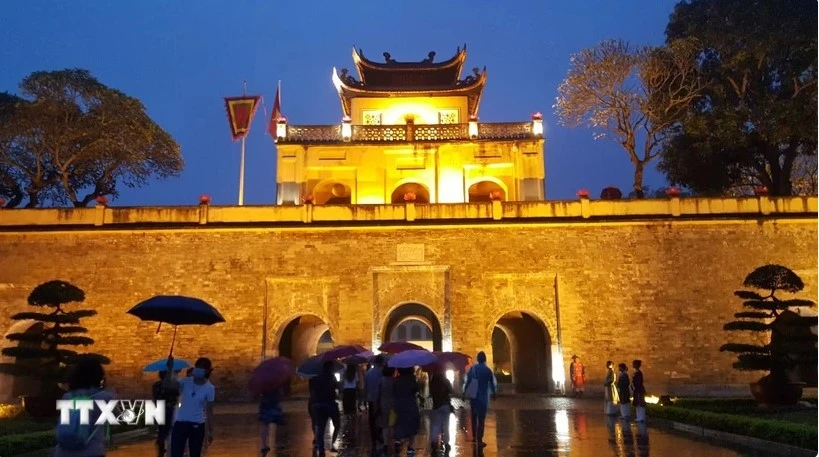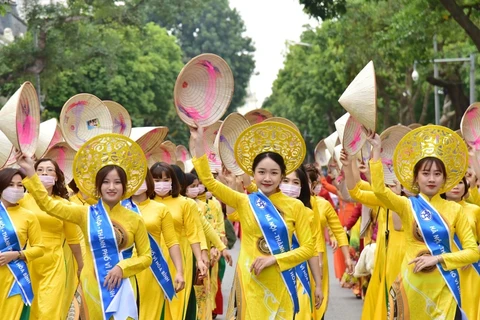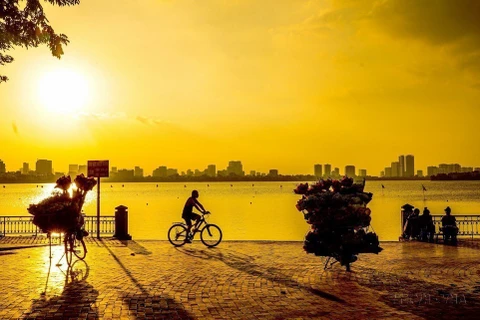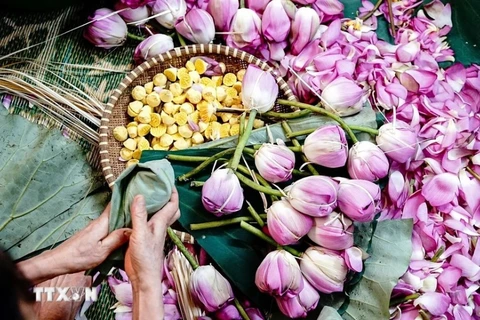
Hanoi (VNA) – Owning a large number of cultural heritages and creative spaces, Hanoi, a Creative City of Design since 2019, has been on the right track to become a “green, smart and modern” city by 2030 by optimising its strengths and potential, especially from creative resources.
At its 17th congress, the Party Organisation of Hanoi set a target to develop the capital in a fast and sustainable manner towards the green, smart and modern direction, ensuring the city’s high competitiveness compared to other localities in the country and the region.
By 2025, the city aims to basically complete the goal of industrialisation, with per capita gross regional domestic product (GRDP) of 8,300-8,500 USD, which is expected to reach 12,000-13,000 USD by 2030 and over 36,000 USD by 2045.
Recently, the municipal People’s Council adopted the Hanoi Capital Master Plan for the 2021-2030 period with a vision to 2050, which set a general target of turning the city into a time-honoured, civilised, modern, green and smart city, a venue of the cultural quintessence of the whole country and the world, a leading centre for research, innovation, application and transfer of new scientific and technological advances.
The capital also aims to become the centre and driving force for the development of the Red River Delta and the northern economic region, a large economic and financial centre, and a growth pole with a leading role in the country's economy and influence in the region, according to the plan.
The plan defines the development space structure of the capital, including five development spaces, five economic corridors and belts, five driving forces, five socio-economic areas, and five urban areas.
The master plan underlines the necessity of environmental protection and creating green space for urban development, as well as the promotion of the thousand-year-old city's historical and cultural values.Since joining the UNESCO Creative Cities Network in the “Design” category in 2019, Hanoi has organised a multitude of activities relating to design and creativity.
The network membership has helped the city set out new objectives for cultural development, inspire creativity and envision its new brand in the international arena.
Over the past four years, Hanoi has coordinated with relevant sides to launch many creativity-based contests for people from all walks of life, especially youths, which have contributed to its urban construction and sustainable development.
Notably, walking streets, including those around Hoan Kiem Lake in the heart of the capital, the Son Tay ancient citadel, and the Dao Ngoc-Ngu Xa neighbourhood, stand as vital hubs for leisure and recreation, catering to both tourists and local people.
The city plans to launch more creative activities, focusing on its heritage elements, to create a foundation for its sustainable development, while stepping up communications work to promote creativity among the public.
The UNESCO Creative Cities Network was created in 2004 to promote cooperation with and among cities that have identified creativity as a strategic factor for sustainable urban development.
Almost 300 cities around the world which currently make up this network work together towards a common objective: placing creativity and cultural industries at the heart of their development plans at the local level and cooperating actively at the international level.
UNESCO experts said that the international community is impressed at the growth of Hanoi and the image of a city thriving from the war and the focal point of Asian and regional cities./.






















